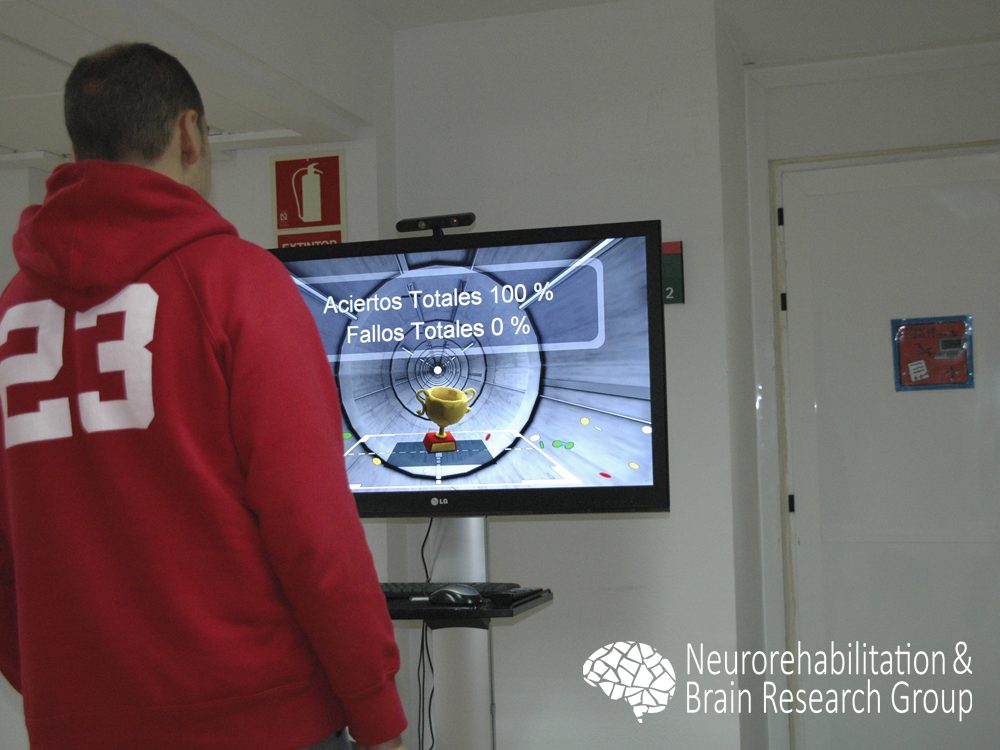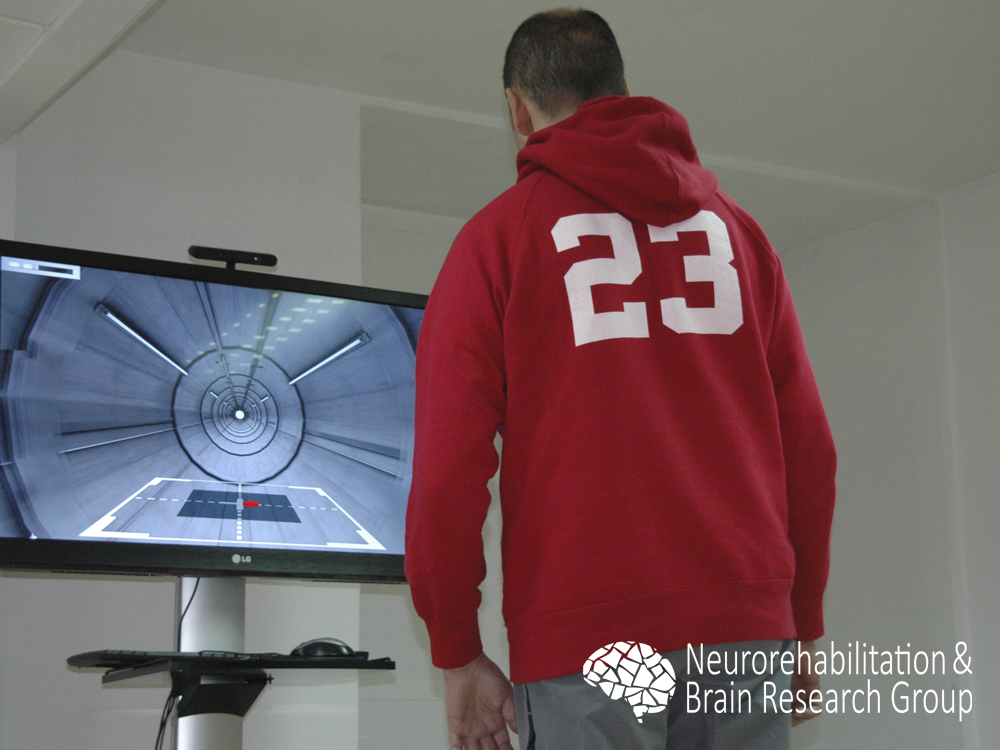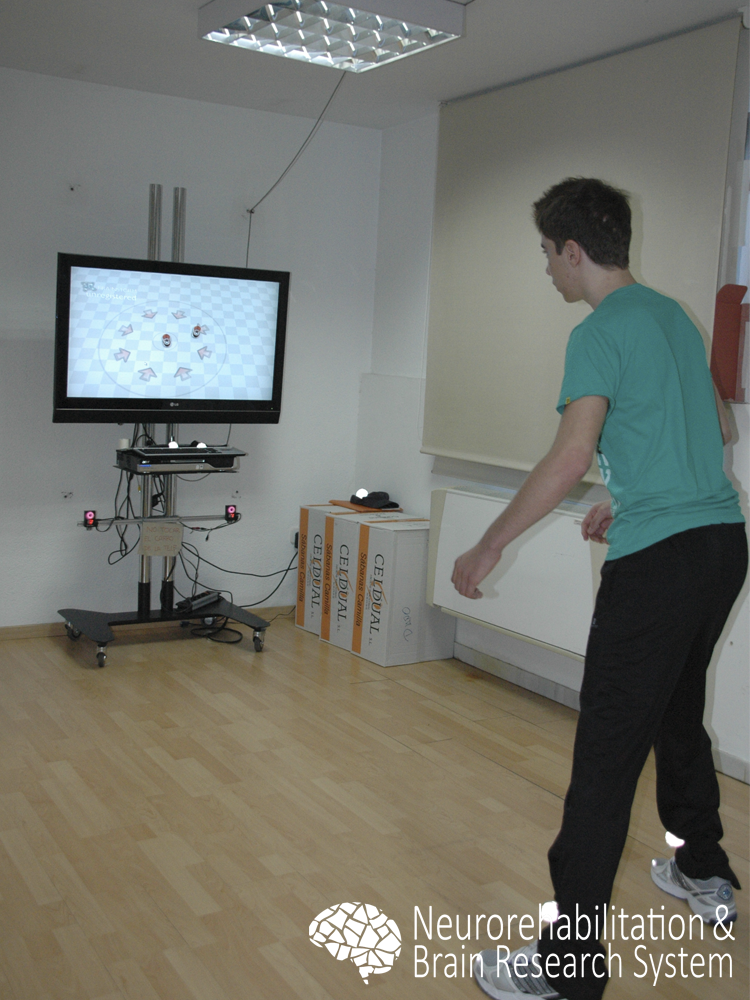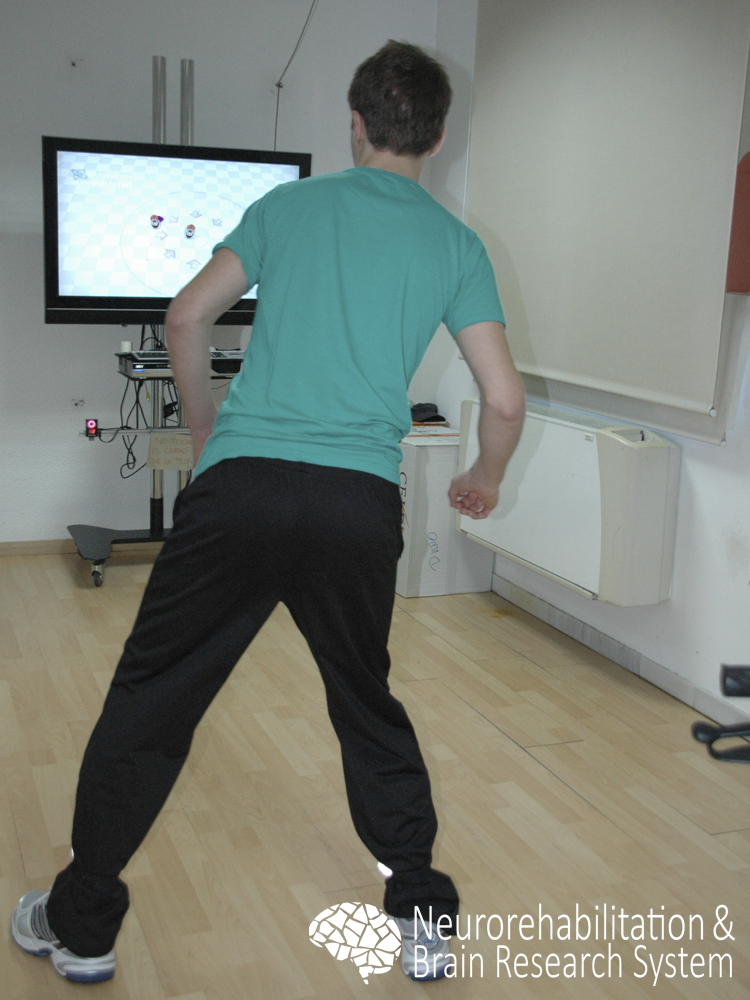Ankle and hip strategy
Systems based on force platforms are particularly interesting, since they enable to estimate the weight distribution of the patients by means of pressure sensors. In contrast to laboratory-grade systems, the Wii Balance Board (Nintendo®, Kyoto, Japan), a peripheral of the Wii gaming system, is an inexpensive interface (less than $100) that has widespread availability. The Wii Balance Board also has the advantage of being portable, easy, and comfortable to handle thanks to its small size (0.511 m wide by 0.316 m long by 0.053 m thick) and weight (3.5 kg without batteries). Furthermore, it is a device with Bluetooth wireless connectivity that is battery operated. The Wii Balance Board contains four force sensors (located in each corner) that are used to measure the user’s center of balance and weight. Users can interact with the game by means of weight transferences. Although their hardware features are very interesting, the Wii Balance Board videogames are oriented to the entertainment of healthy population, and may require motor and cognitive skills that individuals with acquired brain injury may lack. To overcome this limitation, we designed different exercises that promoted the training of the ankle and hip strategies. Exercises provided audiovisual information of the center of pressure and required participants to displace it towards different targets in the virtual environment through weight transferences and postural readjustments.
The efficacy of the training of the ankle and hip strategies was initially tested in randomized controlled
trial on a sample of chronic hemiparetic individuals with acquired brain injury.1
Participants underwent a physical therapy program or combined physical therapy with customized exercises
using the Wii Balance Board. After an intensive intervention, participants in the experimental group
significantly improved their balance condition compared to patients who underwent traditional therapy. In
addition, participants reported the experienced as enjoyable and motivational. These results were replicated
in a longitudinal study on a stroke sample, which also proved that the improvements were maintained one
month after the intervention.2


Stepping strategy
With regards to the stepping strategy, in order to estimate the participants’ feet movements we used
different tracking solutions along time, as an optical solution using OptiTrack V100:R2 cameras
(NaturalPoint, Corvallis, OR, USA) with two reflective markers, the electromagnetic G4 with two sensors
(Polhemus, Colchester, VT, USA), or the Kinect or Kinect v2 (Microsoft, Redmond, WA, USA), which enable
human pose recognition from depth images and provides the 3D position of many body joints without any
wearable device. It is important to highlight that subjective perceptions and preferences are far from being
constant among different populations, thus suggesting that these considerations, together with the
performance parameters, should be also taken into account when designing a rehabilitation system.3
To train the stepping strategy we designed an exercise that immersed the participants in a 3D virtual
environment, where their feet were represented by two shoes that mimicked their movement in the real world.
Initially, both shoes appeared in the center of the virtual environment inside a circle, around which some
items rose from the ground. The objective of the task was to reach the items with the nearer foot while
maintaining the other foot within the circle. A third-person view, which allowed the participants to see the
virtual items all around them, was used.
A preliminary study involving individuals with acquired brain injury and optical tracking showed that the
training of the stepping strategy could provide benefits to the balance condition.4
Interestingly, a setting using the novel skeleton-based tracking devices, as the Kinect, was shown to
provide similar effects.5
A randomized controlled trial involving chronic hemiparetic stroke survivors and a very similar design
evidenced greater improvement in balance in the experimental group when compared to the control
group.6
Again, participants’ feedback was very positive. The training of the stepping exercise could have improved
the speed and precision of the supporting base changes and one-leg standing ability, which are important
abilities for many daily activities, such as walking (one-leg support phase). The novel Kinect-based
technology allows motion tracking at a low cost in such a way that these devices can be used for in-home
rehabilitation. In a randomized controlled trial we examined whether an intervention with these devices can
be effective and save costs.7 Our results evidenced
that virtual reality-based telerehabilitation interventions can promote the reacquisition of locomotor
skills associated with balance in a similar way that in-clinic interventions, both complemented with a
conventional therapy program. In addition the usability and the motivation of both interventions can be
similar. And finally, the telerehabilitation interventions can involve savings that vary depending on each
particular scenario.


Assessment
Posturography systems that incorporate force platforms are considered to assess balance and postural control
with greater sensitivity and objectivity than conventional clinical tests. The Wii Balance Board has been
shown to have similar performance characteristics as other force platforms, but with lower cost and size. We
have designed a web-based tool that allows clinicians to carry out posturographic assessments using the Wii
Balance Board.8 Benefits of this tool are that it is
freely available to the public and that results can be shared among sites. The system can be acessed
here or from the
Resources accessed area in our website. Healthy individuals
and individuals with stroke participated in the study. Both groups were assessed using the Wii Balance
Board-based posturography system. Individuals with stroke were also assessed using a laboratory grade
posturography system and a battery of clinical tests to determine the concurrent validity of the system. A
group of subjects were assessed twice with the Wii Balance Board-based system to determine its reliability.
Concurrent validity with another posturography system was moderate to high. Correlations with clinical
scales were consistent with previous research. The reliability of the system was excellent in almost all
measures. In addition, the system successfully characterized individuals with stroke with respect to the
healthy population. The Wii Balance Board-based posturography system exhibited excellent psychometric
properties and sensitivity for identifying balance performance of individuals with stroke in comparison with
healthy subjects, which supports feasibility of the system as a clinical tool.
References
- Gil-Gómez J., Llorens R., Alcañiz M., Carolina C. Effectiveness of a Wii balance board-based system (eBaViR) for balance rehabilitation: a pilot randomized clinical trial in patients with acquired brain injury. Journal of NeuroEngineering and Rehabilitation, 2011. 8:30.
- Llorens R., Albiol S., Gil-Gómez J.A., Alcañiz M., Colomer C., Noé E. Balance rehabilitation using custom-made Wii Balance Board exercises: clinical effectiveness and maintenance of gains in acquired brain injury population. International Journal on Disability and Human Development, 13 (3): 327–332.
- Llorens R., Noé E., Naranjo V., Borrego A., Latorre J., Alcañiz M. Tracking Systems for Virtual Rehabilitation: Objective Performance vs. Subjective Experience. A Practical Scenario. Sensors, 2015, 15(3), 6586-6606.
- Llorens R., Colomer-Font C., Alcañiz M., Noé-Sebastián E. BioTrak virtual reality system: effectiveness and satisfaction analysis for balance rehabilitation in patients with brain injury. Neurología, 2012. 28 (5).
- Llorens R., Alcañiz M., Colomer C., Navarro M.D. Balance recovery through virtual stepping exercises using Kinect skeleton tracking: a follow‐up study. Studies in Health Technology and Informatics, 2012. 181: 108-112.
- Llorens R., Gil-Gómez J., Alcañiz M., Colomer C., Noé E. Improvement of balance using a virtual reality based stepping exercise: a randomized controlled trial involving individuals with chronic stroke. Clinical Rehabilitation, 2015. 29(3):261-8.
- Llorens R., Noé E., Colomer C., Alcañiz M. Effectiveness of a VR-based telerehabilitation program for balance recovery after stroke: a randomized controlled trial. Archives of Physical Medicine and Rehabilitation, 2015. 96(3):418-425.
- Llorens R., Latorre J., Noé E., Keshner E.A. Posturography using the Wii Balance Board™. A feasibility study with healthy adults and adults post-stroke. Gait and Posture, 2016. 43:228-32.